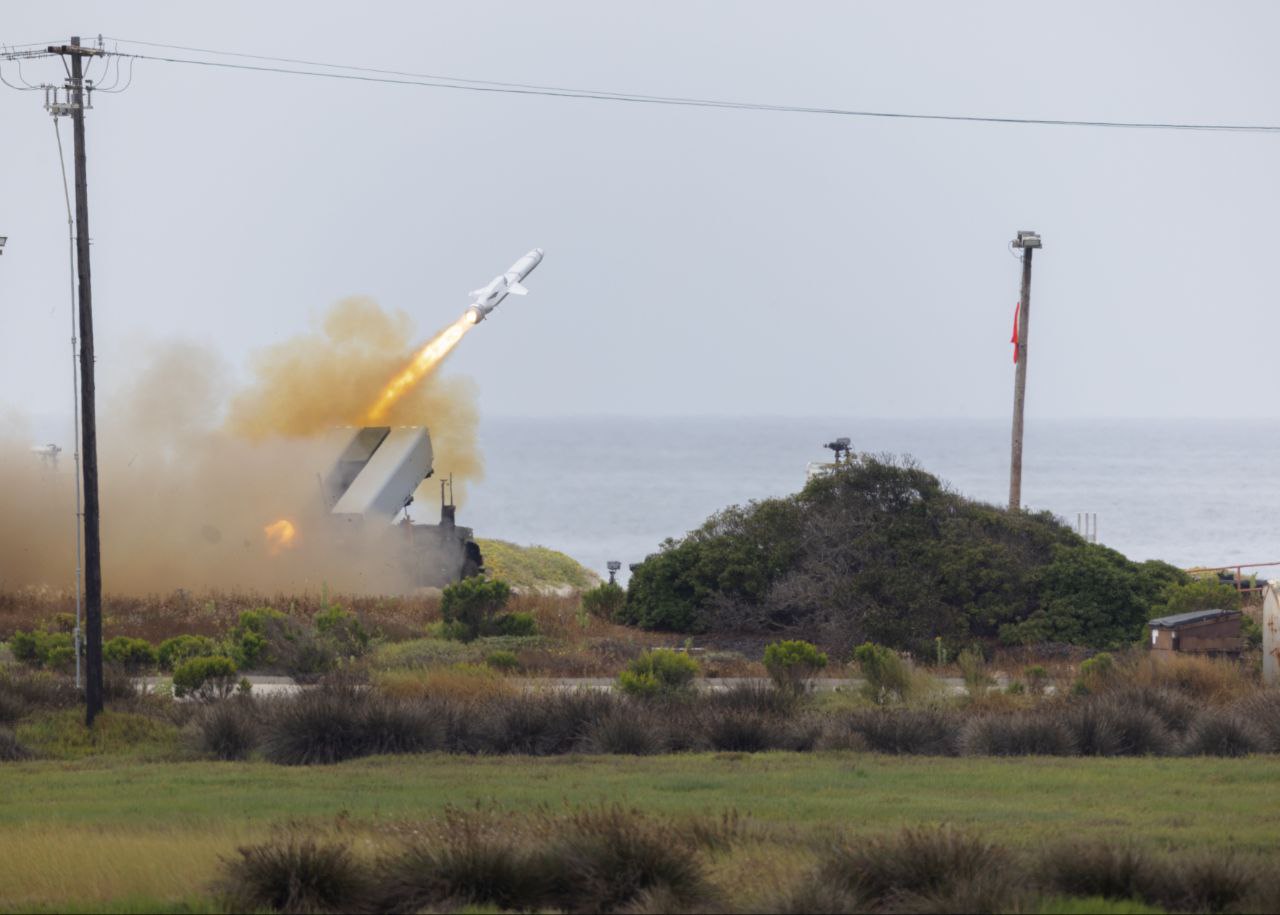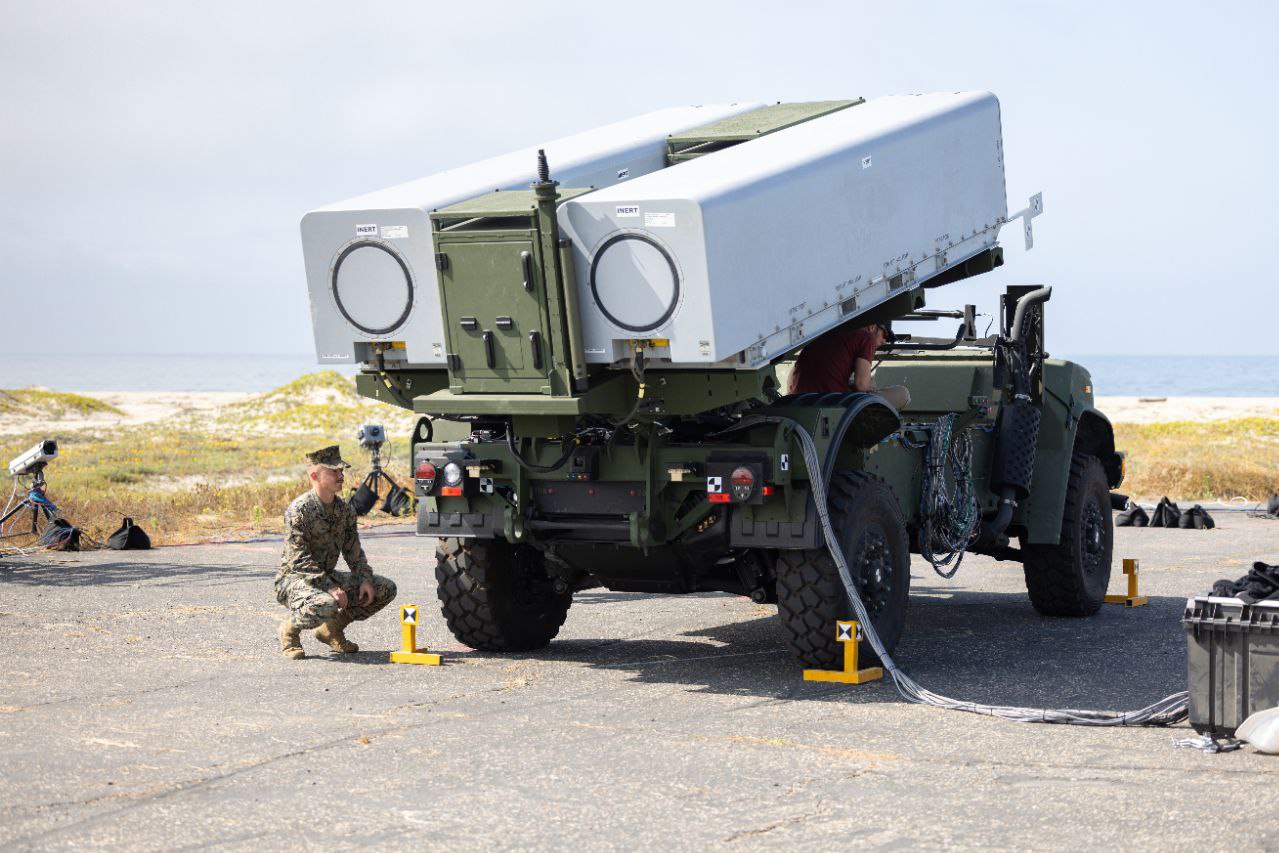The US Marine Corps (USMC) earlier this month tested the land-based anti-ship missile that it could use against Chinese warships as a part of its island-hopping strategy in the East and South China Seas (SCS).
China Completes 10 Years Of $1.4 Trillion BRI Project; Puts South Asia, Barring India & Bhutan, In A Bind
The Navy/Marine Corps Expeditionary Ship Interdiction System (NMESIS) fires the Naval Strike Missile (NSM), which can target China’s People’s Liberation Army Navy (PLAN) in a Taiwan contingency.
The small, mobile hard-to-detect units of the Marine Littoral Regiments (MLR) can either harass or sink PLAN vessels by operating in the restricted Anti-Access/Area-Denial (A2/AD) while also presenting additional targets for Beijing’s military, creating a dilemma.
The NMESIS’s firing marks one of the significant steps in the United States (US) trying to overturn its logistical, technological, and doctrinal disadvantages before China in the western Pacific. The first live fire occurred in November 2020, while the second happened in August 2021 during the Large Scale Exercise 21.
Sleeping Death! Russia Claims Developing Drones That Can Hibernate For Weeks Before Slaying Its Target
According to Twitter posts by leading accounts that cover the US military, the NMESIS test took place on June 28 from the Naval Air Station Point Mugu in California. Marines from the 2nd Battalion, 11th Marine Regiment, 1st Marine Division took part in the firing.
Program In The Works For A While
Moving to induct a new anti-ship missile (AShM) rapidly reduces the dependence on naval and air assets that are already vulnerable, given China’s huge ‘home advantage‘ and, conversely, the US’ ‘away disadvantage.’

Part of the USMC’s Force Design 2030 doctrine, GBASM envisages basing small, nimble, and highly mobile teams undertaking ‘Long Range Fires’ at enemy assets in a highly complex and networked combat environment.
The EurAsian Times had reported how the US military brass admitted before lawmakers that China’s ground-based ballistic missiles easily threatened American bases and Western Pacific.
US Overturning Disadvantages Before China
Experts also warned how the Chinese Anti-Access/Area Denial (A2/AD) doctrine practiced through its missile systems that simply outrange US systems would not allow US Navy ships to get close and exploit their capacity/payload advantage. The Chinese would simply fire first and from afar.
A September 2021 article on the USMC website about the GBASM program called it the USMC’s “sea-control effort.” Joe McPherson, Program Manager for Long Range Fires at the MCSC, said, “The Corps (is) bringing a ground-based solution (to) complicate the adversary’s ability to counter our anti-ship capabilities since ground-based launchers are hard to find.”
“NMESIS brings a launcher that is survivable inside the enemy’s weapons engagement zone.” This is because everything US’ “adversaries” (China) “developed over the last 20-30 years was intended to counter ships and aircraft,” McPherson added.

Survivability is ensured by a Remotely-Operated Ground Unit for Expeditionary Fires (ROGUE) built on a Joint Light Tactical Vehicle, which allows Marine crews not to be co-located with the launcher. This aligns with the US Marine Corps Force Design 2030 doctrine released in March 2020.
The concept called for a requirement for “smaller, lower signature, and more affordable amphibious ships and a shortfall in affordable, distributable platforms that will enable littoral maneuver and provide logistical support in a very challenging theater for the kind of operations envisioned in our current concepts.”
That it envisages operating “within the range of adversary long-range fires; maneuver across the seaward and landward portions of complex littorals; and sense, shoot, and sustain while combining the physical and information domains…without the vulnerabilities of concentration, thanks to mobile and low-signature sensors and weapons,” shows the serious effort the US is mounting to overturn the doctrinal, technological and systemic surprises China sprang on it.
What A Marine Unit Firing A NMESIS Looks Like
The USMC plans to field 14 batteries, of which three batteries will be deployed to MLRs while 11 will be deployed to Continental US (CONUS) in support of rotational MEU deployments.
The first unit to declare operational capability with the system will be the 3rd Marine Littoral Regiment in the fourth quarter of 2023. More units will be receiving launchers and reloads over the coming years.
The USMC plans to declare Initial Operating Capability (IOC) with the system once four batteries are fully equipped by 2025. Once the USMC fields all of the 14 planned medium-range missiles (MML) batteries in 2030, the system will reach its full operational capability (FOC) milestone.
- The author can be reached at satamp@gmail.com
- Follow EurAsian Times on Google News




